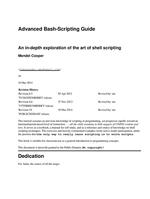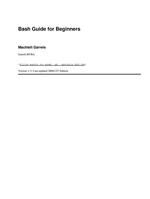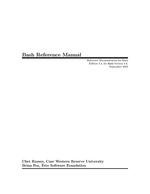Other

“This tutorial assumes no previous knowledge of scripting or programming, yet progresses rapidly toward an intermediate/advanced level of instruction … all the while sneaking in little nuggets of UNIX® wisdom and lore. It serves as a textbook, a manual for …

“The primary reason for writing this document is that a lot of readers feel the existing HOWTO to be too short and incomplete, while the Bash Scripting guide is too much of a reference work. There is nothing in between …

“This text is a brief description of the features that are present in the Bash shell (version 4.4, 7 September 2016). Bash is the shell, or command language interpreter, for the gnu operating system. The name is an acronym …

